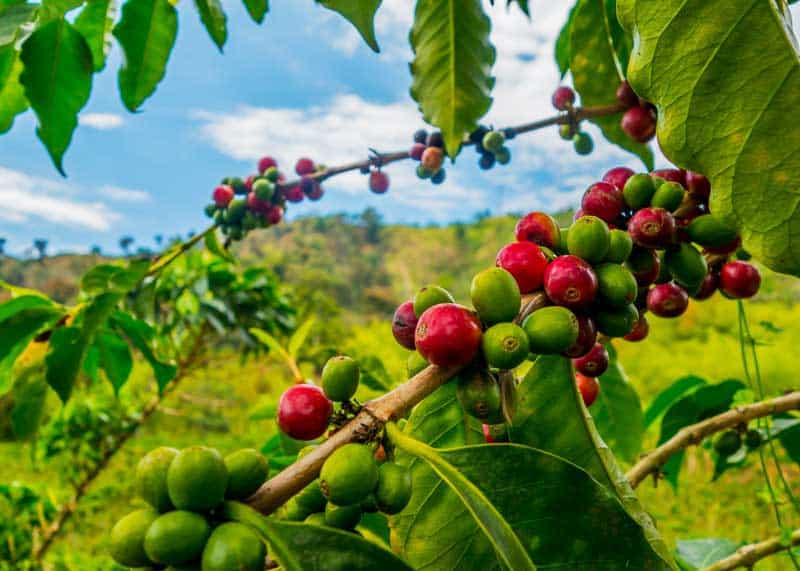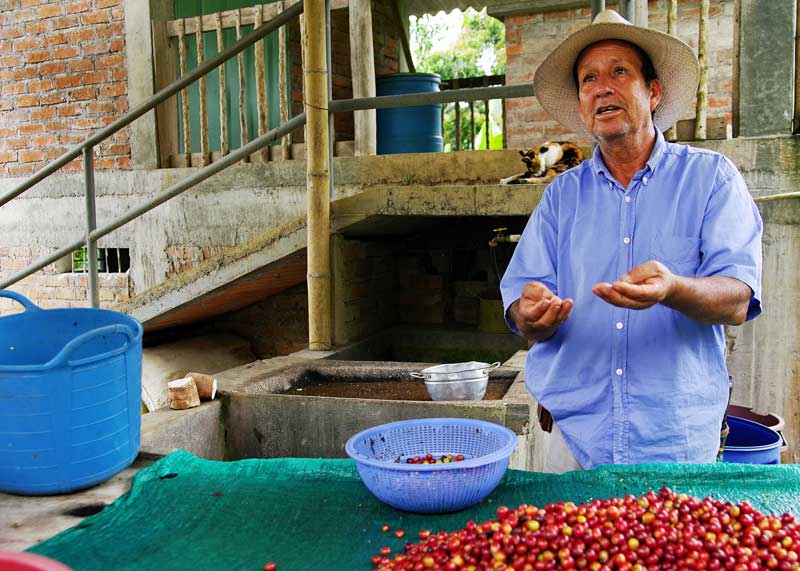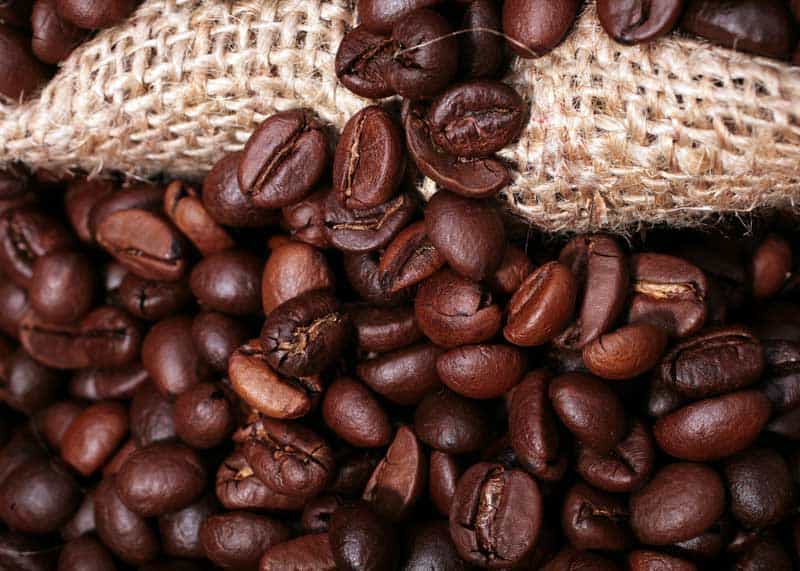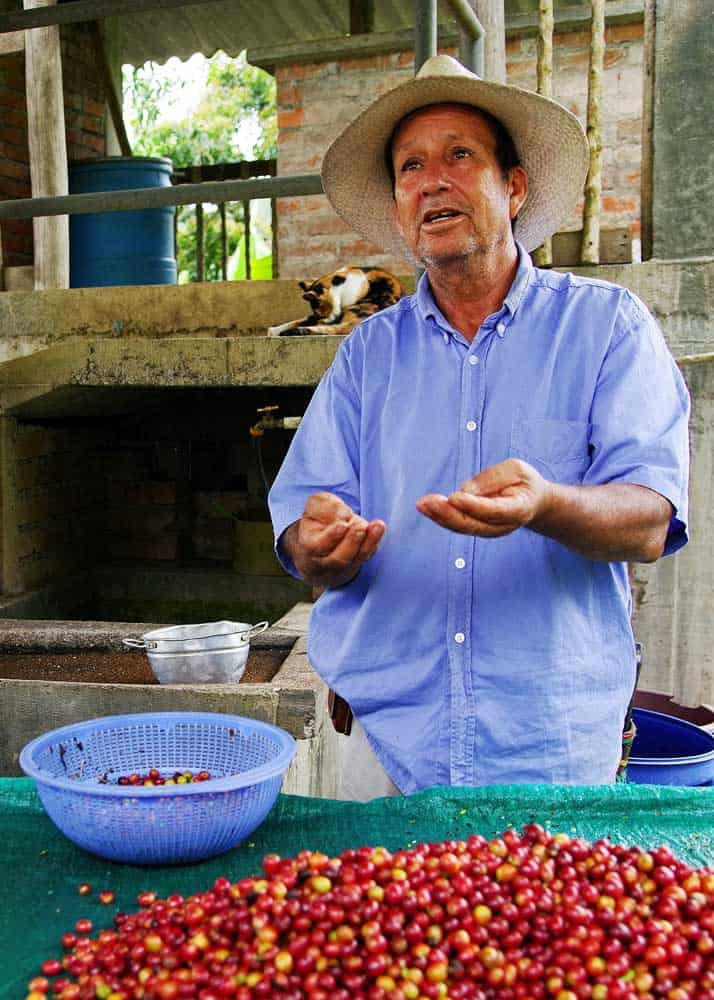Colombian coffee is considered to be among the best in the world. Coffee from Colombia is a classic “coffee flavor” in North America. In this guide, you’ll learn about the best beans, brands, regions, and flavor notes from Colombia.
Colombian coffee comes from a rich history back to the 1730s. UNESCO has declared regions of Colombia as a world heritage site for its coffee landmark. Flavors from these regions of Colombia encompass flavors with a combination of mellow acidity and rich caramel.

You can find Colombian coffee everywhere. If you are a fan of coffee and coffee history, you will enjoy this story of Colombian coffee culture and its rich flavors from different regions.
History of Colombian Coffee
The first report of a coffee plant in Colombia was in 1739 by a Jesuit priest, José Gumilla. He brought coffee with him near where the Meta river empties into the Orinoco during the mission of Saint Teresa of Tabajé.
Although encouraged to grow coffee plants, the local people resisted at first. Due to the inconvenient harvest time and five years before the first harvest, they didn’t buy into coffee as a crop. Priest Francisco Romero had an idea to offer growing coffee as a penance. People were told to plant 3 or 4 coffee trees.
This was the beginning of the coffee industry in Colombia.
Priest Francisco Romero was a significant force in developing coffee crops in the northeast region of Colombia. Areas of Santander, North Santander, Cundinamarca, Antioquia, and Caldas’s historical region flourished with coffee.
The real growth of exports did not pick up until the mid-19th century. With economic expansion throughout the world, the doors to international trade opened up. Soon the United States become the largest consumer of Colombian coffee, followed by Germany and France.
Small coffee producers bloomed in regions of Antioquia, Santander, and areas referred to as Viejo. The dramatic growth of the Colombian coffee export market was thanks to the creation of the National Federation of Coffee Growers of Colombia in 1927.
Now, coffee is produced by over 500,000 coffee-farming families.
In 2007, the European Union granted a protected designation of origin status for Colombian coffee.
Soon to follow, in 2011, the coffee cultural landscape of Colombia was declared a World Heritage site by UNESCO. Historical source: Coffee in Colombia

More reading: How Many Cups of Coffee in a Pound of Beans?
Geography of Colombia
The climate of Colombia’s geography makes it an excellent place for coffee growth. The temperature, the elevation, and even the soil.
7 Reasons Colombia Grows Great Coffee
Here are some of the benefits of coffee growing in Colombia:
- Temperature ranges between 46 to 75 degrees Fahrenheit
- The region is full of lush Andean Rainforest
- At least 80 inches of rainfall per year
- Does not experience any freezing temperatures
- Although they have short harvests, Colombia is close to the equator and gets two harvests a year. This provides for year-round production and availability of fresh Colombian coffee
- Rich and nutritious volcanic soil which is beneficial to coffee growth
- A high elevation of 4000 to 6000 feet provides high-quality and fruit-flavored coffee.
Colombia’s mountainous regions, with ideal rainfall and balmy climate, offers an excellent recipe for coffee crops.
The various regions of the country also provide diverse flavors and significant profiles.
Colombian Coffee Growing Axis Region
At first, coffee crops were planted in the eastern region of Colombia.
Now the majority of the crops are grown around the well-known “Colombian coffee growing axis region” also known as Eje Cafetero, Zona cafeteria, and the Triángulo del Café, which includes three significant areas, the Caldas, Quindío, and Risaralda.
Within this region are small Colombia departments, which totals roughly 5,356 square miles and approximately 1% of the Colombian territory.
UNESCO declared the “Coffee Cultural Landscape of Colombia” as a world heritage site for its “unique and representative of a tradition that is a strong symbol for coffee growing areas.”
The landscapes encompass six agricultural landscapes. These farming landscapes also include the 18 urban centers of the foothills of the Western and Central ranges of the Cordillera de Los Andes. These various farms diversify the flavor and notes of Colombian beans.
In 2011, climate change caused a reduction in the production of Colombian coffee from 12 million bags to 9 million. Due to an increase in 1 degree of temperature and average precipitation, we are losing coffee bean production.
Every year, Colombia reaches the coffee production of 11.5 million bags on average.
Are Colombian Coffee Beans the Best in the World?
Country and brand marketing (like Juan Valdez) has created this perception for many, especially in the Americas.
Here are a number of factors making Colombian coffee among the best growers.
2 Grading Categories of Colombian Coffee
Different grades are in categories of size, which is often synonymous with the coffee bean quality. There are two primary coffee bean grades, Supremo and Excelso.
Both grades of beans can come from the same tree but are simply screened on a different size.
- Supremo: Supremo beans are sized on screens of 17. They are large beans and less common than the Excelso.
- Excelso: Excelso beans are still large, but smaller than Supremo. These are the most common and the majority of coffee beans exported from Colombia. They are sorted from screen sizes of 15 to 16.

Traveling? Here’s how to order coffee in Spanish
Taste and Flavor Notes in Colombian Coffee
In general, Colombian coffee is known for its mild and well-balanced flavors.
Colombian coffee is a combination of these significant notes:
- Mellow acidity paired with caramel sweetness.
- Sweet and medium-bodied
- Most common to North Americans for significant coffee flavors
- Hints of Nutty notes
- Caramel and creamy aftertaste
Here’s more about how to describe coffee like a pro.
Colombian Coffee: From Farm to Table
Take a quick trip to a coffee plantation in Colombia.
Common Regions of Harvest and Flavor
Flavors come from elevation and the region. The following are common cities or regions that produce coffee beans today. Some are regions we’ve visited previously in the history section above.
- Antioquia, Medellin
- Tolima, Ibague
- Caldas, Manizales,
- Valle del Cauca, Cali
- Huila, Neiva
- Cauca, Popayan
- Santander, Bucaramanga
Learn more about terroir coffee.
Depending on the region of these bean growth, the flavors will vary.
Flavor Generalizations per Region
| Northern Areas | Southern Areas | Central Area |
| Less Acidic | Higher Acidity | Herbal |
| Full-Bodied | Citrus | Fruity |
| Traces of Chocolate and nut | Strong aroma | |
| Medium Acidity | ||
| More balanced |

5 Best Colombian Coffee Brands
Colombian beans are exported to the United States, France, Germany, Italy, and Japan.
They are best known for their Arabica coffee full of sweet and complex aromas and rich yet sweet texture.
Robusta coffee is more common at lower altitudes. They will be cheaper and sometimes considered lower quality.
- Volcanica Colombian Peaberry: Grown in high-altitude areas, which results in extra flavors while providing the traditional rich, smooth, and creamy Colombian beans’ flavors.
- Don Pablo Colombian Supremo: Offering Medium-dark roast beans, Don Pablo is mild, sweet, and rich with a smooth cocoa finish.
- Juan Valdez Coffee: A full-bodied and nutty flavor coffee. This coffee doesn’t have any bitter aftertaste while encompassing strong and rich flavors. Juan Valdez is also a well-known mascot of the Federation.
- Peet’s Single Origin Colombian Coffee: This dark roast, single origin bean is sourced from high Southern region of San Agustin, Huila. Has bright and sweet flavor notes.
- Koffee Kult Colombia: Rich aroma is full of chocolatey aroma, bold body, paired with a sugary finish. The roast brings out the sweet flavors.

Now, Let’s Brew Some Colombian Coffee
Rich in flavor and history, Colombian coffee is always a great and reliable source for a great cup of coffee. With a history that roots all the way into the 1700s, there is more to a cup of coffee when you brew Colombian!
Try out different flavors from single regions and experience the various flavors yourself! With the various regions offering different elevation and overall climate, your experience with Colombian coffee will be an adventure from source to source.
- About the Author
- Latest Posts
Bryan Haines is a co-founder and writer on EnjoyJava – and is working to make it the best coffee blog in the world.
He is a travel blogger at Storyteller Travel and blogs about photography at Storyteller Tech. He is also co-founder of Storyteller Media, a company he started with his wife, Dena.

